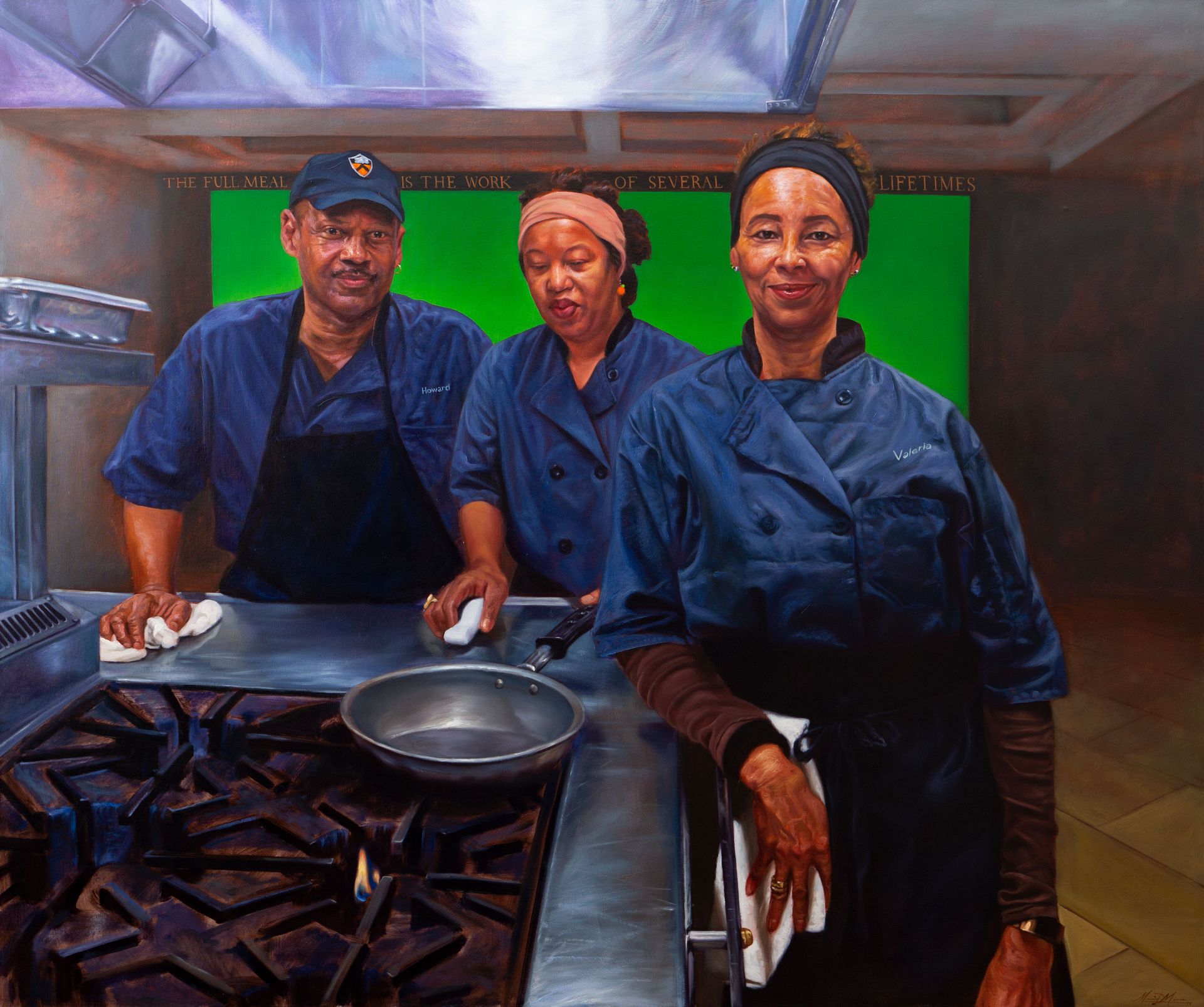Portraiture is as much about power as it is art. Like most elite institutions, Princeton has traditionally displayed paintings of prominent alumni and past presidents, such as the former US president Woodrow Wilson, whose racist legacy prompted a student campaign to purge his name from building façades. But this winter, five new oil portraits by the artist Mario Moore, one of last year’s visiting Hodder Fellow at the Lewis Center for the Arts, have entered the university’s permanent collection, shining light on figures often absent from Ivy League hallways: the African American men and women who hold blue collar jobs at and around Princeton.
The work Several Lifetimes, for example, celebrates members of the dining hall staff, Howard Sutphin, Valerie Sykes, and Kaniesha Long, and Garfield is a portrait of Garfield Brown, a member of the Princeton Athletics grounds crew and a frequent supporter at student sports events. Both works go on display in the campus buildings where the sitters' work next month. And in Center of Creation, already on view in the Princeton Art Museum's American gallery, the security guard Michael Moore holds open the elevator to the museum’s Kienbusch Galleries. This portrait has another layer of institutional critique, featuring reproductions of work by Barkley Hendricks and Henry Ossawa Tanner in the background that represent a history of African-American portraiture that is missing from the museum’s holdings.

Michael Moore, Several Lifetimes (2019)
“We didn’t make a pre-commitment to acquire Moore’s work because we needed to see the outcome first,” says Princeton University Art Museum director James Steward of the process. “It was our response to the work on both a technical and a conceptual level. He’s very clearly thinking about how to paint in pose and composition in a way that reflects the modern condition of being a human being on a university campus.”
Moore’s paintings also fit into a broader drive to diversify the school’s portrait collection and tell Princeton’s history more fully through art. As part of a campus-wide conversation about the institution’s connections to slavery, the MacArthur-winning artist Titus Kaphar installed a temporary sculpture at Maclean House, where slaves were sold as part of the estate of Princeton’s fifth president. In 2016, the school commissioned a new set of portraits of alumni and former faculty, including the Noble laureates Toni Morrison and Sir Arthur Lewis.
“I don’t really like the term rewriting history,” says Moore, a Detroit native and graduate of Yale’s MFA painting programme, who cites inspiration in his father, a security guard at the Detroit Institute of Art. “When it comes to art, whoever tells their story has the power. I just like telling history.”


